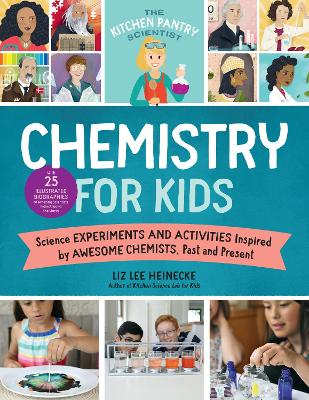Reviewed by annieb123 on
The Kitchen Pantry Scientist: Chemistry for Kids is a fun and accessible STEAM book for young learners (really, all ages including adults) by Liz Heinecke. Due out 5th May 2020 from Quarto on their Quarry imprint, it's 128 pages and will be available in paperback and ebook formats.
The format of this book is appealingly different. Readers are given a short biography of an iconic scientist (Preistly, Curie, Ada Yonath, Alice Ball, and many more). The lab part of each chapter allows students to recreate similar experiments to the ones for which the scientists are well known.
The illustrations are colorful and engaging. The photography is top notch - clear and well formatted. The lab exercises are well written and the underlying theory is well explained in layman/kid accessible language. Safety is paramount and the parts which need adult supervision are clearly delineated. The ingredients and tools used in the labs are easily accessible and inexpensive.
I've been hammering on since the early days of my blog on the importance of STEAM education for our youngsters because they're the next generation of doctors, researchers, engineers, artists, and teachers. It's nice to see books which are fun and worthwhile - this one definitely is. The author's choice of scientists was also a pleasant surprise and there will be a number of them who are likely unfamiliar to most readers.
In these days of home-schooling and social distancing, keeping the learning process fun and fresh can be daunting. This books is an entertaining and valuable resource in the toolbox.
Five stars.
Disclosure: I received an ARC at no cost from the author/publisher for review purposes.
Reading updates
- Started reading
- 3 May, 2020: Finished reading
- 3 May, 2020: Reviewed

